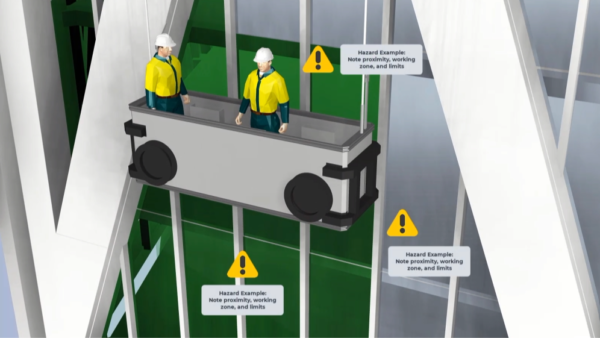
Parties should regularly download records from a common data environment (CDE) so they have them in the event of access to the CDE being denied when in dispute.
That was one of the key pieces of advice from a recent IM4Legal webinar. Sarah Keyte, technical director at HKA, raised the spectre of the Trant Engineering case: “Common data environments are incredibly useful. Having that single source of truth can be incredibly important when dealing with claims. So not just models, but all sorts of records, whether that be the contracts, procurement, specification, drawings, progress reports – all sorts of documents can be held on a common data environment. But they’re only useful if you have access.
“In the case of Trant Engineering vs Mott McDonald, one party lost access to the CDE in a dispute. This happens a lot in the claims world, because it’s a really good way of stopping another party from getting access to all the information. Either you’ve got a client and they want to boot the other party off the CDE, or they’ve been booted off. We’ve even seen instances where a third party, who controls everything, has kicked everyone else off, or become insolvent.
“CDE and the records from that, be it models or other documents and records, are only useful if you have access. If you have these on a project, if you have the ability to download the records from it or take some sort of record of what’s on there, I suggest you do that at key intervals and have something in your contract that says what you do with the common data environment in the event of a dispute.”
What are you warranting?
May Winfield, global director of commercial, legal and digital risks at Buro Happold, emphasised the need for clarity when bringing information management and digital construction into the contractual process. “Thinking about software: are you warranting that the models, the digital data, the various tools and technology you’re providing is going to be compatible with the client’s, or the rest of the project team’s software? Bear in mind, everyone may be using different software.
“If you’re using a different software format, you may have some formatting [issues]. This is a real problem. What if it causes delay to interactions? Are you responsible for the two or three days that could make a big difference in a project?
“If you are using publicly available software as part of your digital environment, have you made it clear to the client whether you’re paying for the licenses, or does the client need to arrange the licenses themselves?”
Data risks
She noted that those responsible for drafting contracts may not be familiar with digital construction technology, so the ownership and right to reuse technology and data needs to be clarified with them.
Winfield added: “Most contracts will say nowadays that the client owns all copyright in digital data, in everything to do with the project, so you could accidentally lose copyright, even though neither party realised it at the time.”
Turning her attention to data risk, she said: “I think it’s often very important to not just say what you’re responsible for, but say what you’re not responsible for. People often miss out exclusions and the clarifications – things like corruption or unintended amendment, modification, alteration, when you upload your files onto a CDE.”
Other risks include the verification and validation of data, data transfer and data loss (from a server crash, for example), Winfield noted.
Don’t miss out on BIM and digital construction news: sign up to receive the BIMplus newsletter.
Comments
Comments are closed.













I would like to raise some key points about this post and the case.
The case, on which I was consulted, was not about being restricted from the CDE; it was about the fact that no CDE was in place. If we are going to use this term and its definition, we should use it correctly.
Trant failed to establish processes (CDE) for how project information should be managed between them and their client/suppliers and left it all with the client and their PM, who established an EDMS. However, this was not what we would define as a CDE. Everyone should keep copies of the information they use to make decisions or share, including the audit trail that sits behind it. Trant felt they didn’t need to, which is a rare practice often resulting from poor business procedures. We did find, however, during our investigation, that this wasn’t normal for Trant; they do, in fact, have a CDE process they usually deploy. However, it was not done on this project, largely because they were told they were not allowed to!
Unfortunately, we still have this issue. Some public clients, who I won’t mention, stop contractors from using their own systems & establishing true CDEs where interconnections of information and systems (EDMS & more) mean all have copies at the key pitch points. When they are limited to using EDMS tools the clients use and configure. even though these tools are insufficient for managing the complete information development process problems begin. This problem arises from poor guidance given to these clients and persists. So the bigger question is, how can you make copies or run a CDE when the client states you cant and you just have to make do with their EDMS?